Growing Mushrooms in Your Basement is Easier Than You Think
Author: Jen Worst | Editor: Omar Alonso
Review & Research: Jen Worst & Chris Miller
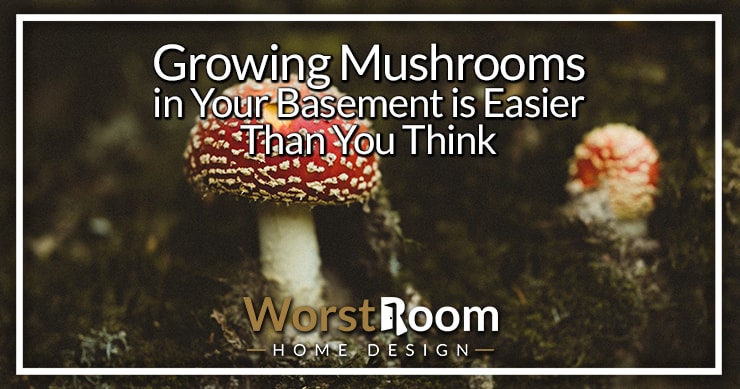
Growing mushrooms in your basement is so easy that some people find it happening by accident and become alarmed by it. But when you set out to do it on purpose, you'll find there's hardly a better place to get it done.
Mushrooms and mold are often unwanted visitors in your basement. They can grow and flourish down there if you don’t catch the infestation in the initial stages. This rogue mushroom growth can trigger allergic reactions and cause respiratory problems if left unchecked for a long time.
But every cloud has a silver lining. The most common cause that encourages fungal growth is the moist and dark environment in the basement.
With such an ambient environment for mushroom growth right at home, you can turn around the infestation and create a mushroom garden in your basement—on purpose.
The Guide to Growing Mushrooms in Your Basement
Here are 9 things you need to know for growing mushrooms in whatever types of basements you have access to effectively and enjoy large harvests on rotation.
1) Choosing the Type of Basement Mushroom
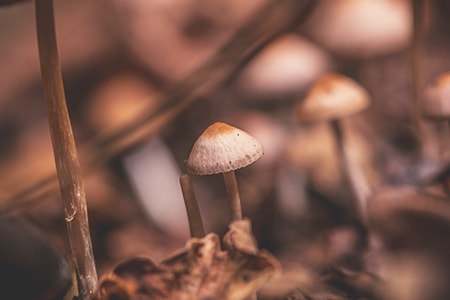
There are a lot of mushroom varieties that grow in the wild and the great thing is that most of them can be grown indoors in your basement. Let’s look at some of the varieties that can be easily grown in your basement.
White button mushrooms are the most commonly available and most widely eaten variety. Cremini and portobello mushrooms are part of the same species as the white button mushroom.
Depending on which part of the growth cycle you decide to harvest your mushrooms, you can pick a white button, cremini, or portobello.
Oyster mushrooms are the kind you want to go for if you are a beginner. They're quite resilient varieties and will grow well in different mediums.
They have large flat caps with almost non-existent stems and are a popular addition in Asian cuisines. They make for a pretty plate once all is said and done.
Enoki mushrooms are small mushrooms with long stems. They take up very little space and can easily be grown—even in jars!
Maitake and shiitake mushroom varieties are packed with a lot of nutrients and minerals providing a host of health benefits. While maitake mushrooms have a smoky flavor, shiitake mushrooms are similar to portobello mushrooms in flavor.
Depending on the variety you choose, you can grow your mushrooms in trays, crates, jars, or even on logs. The process remains the same, so don't worry. Pick based on the other benefits.
2) The Right Way to Start Mushrooms in Your Basement
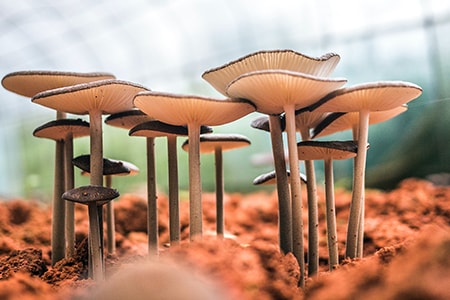
When you start a backyard vegetable garden you start with seeds or seedlings. Mushrooms are not your typical plants.
They're a kind of fungus and fungi do not have seeds. What seeds are to plants, spores are to fungi. So what you need access to are spores, either from a store to inoculate your substrate or from a wild mushroom cap.
There are two ways to start off your basement mushroom garden. You can either use spawn or get yourself a mushroom growing kit. You only need to do either once, and you'll be self-sufficient from there.
Spores are tiny particles that can't be seen easily with the naked eye unless you're looking at a bunch of them, usually on white paper.
So if you want to start growing mushrooms you'll have to get your hands on some good quality spawn. Spawn is nothing but mushroom spores mixed in with sawdust, grain, straw, or woodchips.
The great thing about mushroom cultivation is that it doesn’ require soil. You plant the spawn by mixing it in with some substrate medium like composted manure, sawdust, or even coffee grounds. Vermiculite and perlite work well, too.
Beginners can use mushroom growing kits to start their basement gardens. These kits come with spawn already mixed into the growing medium. You just need to follow the instructions on the kit, cut it open, provide adequate moisture and you can harvest the mushrooms in about two weeks.
Otherwise you need to use a pressure cooker to heat your substrate up high enough to kill any bacteria, mold, and other contaminants, because it's very easy to grow undesirables too, and there are a handful of basement mold types that would be happy to join your party.
This usually requires mason jars and is a big ordeal, but one you'll need to overcome if you plan on becoming self-sufficient with growing mushrooms in your basement.
3) Stages of Mushroom Growth
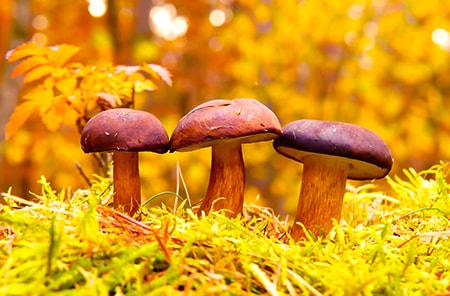
To provide proper care to your crop of mushrooms in your basement, you need to know the life cycle of mushrooms and the stages of growth it goes through.
There are four stages in mushroom cultivation:
- spawning
- inoculation
- incubation
- fruiting.
The spawning stage involves mixing mushroom spores with sawdust, grain, straw, or wood chips. Getting good quality spawn from a reputable seller will ensure higher yields.
Inoculation is the process of adding or mixing our spawn into the growing medium, often a base of vermiculite and other items to help balance the pH levels, maintain moisture levels, etc.
Incubation is the stage where you let the spawn grow and multiply in the substrate for a few weeks or months. Mycelium—a white thread-like substance—grows during the incubation stage.
Mycelium is what keeps the species alive. If the mushroom is the fruit then mycelium is the plant on which it grows. You can think of it as a root system.
During the incubation stage, you should cover the container with a damp cloth and keep it in a dark and humid area of the basement, the kind you might encounter various types of crickets in. This will encourage the mycelium to spread all over the substrate.
The last stage is called the fruiting. The mycelium will grow into pinheads that resemble small bumps. The pinheads will mature into primordia which look like baby mushrooms. These will then become full-sized mushrooms.
4) What Do Basement Mushrooms Feed On?
Mushrooms feed on decomposing material. If you are not using a growing kit, you'll need to prepare a substrate in which you want to plant the mushrooms.
Different types of mushrooms require different mediums to grow. Shiitakes should be grown in hardwood sawdust or on wood.
Button and portobello mushrooms need composted manure while Oyster mushrooms are more adaptable to different mediums and can be grown even in coffee grounds and cardboard.
5) Light in Your Basement
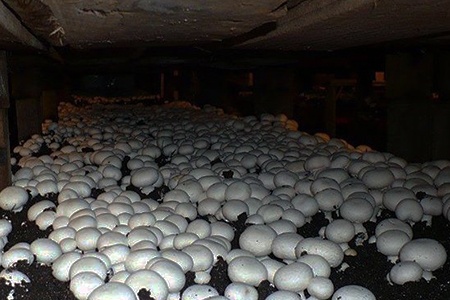
Basements are usually damp, dark, and musty environments. Fungi like mushrooms thrive in these environments. Mushrooms are not your typical plants—they don’t contain chlorophyll. This means that they don’t require sunlight to produce food and grow.
They can grow in low light and even completely dark areas. This is why they can be easily grown indoors in basements or even in the area under your sink.
Although they do not require complete darkness, a dark environment can help retain the moisture in the substrate for longer periods. That's critical to growing mushrooms in your basement.
6) Humidity Levels are Crucial
Mushrooms love moist environments. Ensure that you grow mushrooms in a basement area where the humidity is above 80%. You can control for this in your plans if you add a basement to a house for this purpose.
If there isn't one, you can increase the humidity within containers, but they can't remain air tight either because the carbon dioxide has to get cycled out occasionally.
In fact, they produce the best yield when you provide an ambient, humid, and moist growing condition. In the fruiting season, you should keep the soil moist by spritzing the substrate with water regularly.
The best way to retain moisture is to keep your mushrooms in low lit or dark areas, away from drying heat and drafty air. And provide a daily spray of water mist.
7) Temperature Ranges
The ideal temperature to grow mushrooms is between 55 and 60º Fahrenheit.
During the incubation stage, you will also need to keep the substrate even warmer to encourage mycelium growth, but too hot and you risk growing undesirable bacteria and mold, which can effect the upstairs if it gets out of hand.
Mushrooms like a warm atmosphere that is neither too hot nor too cold. Winter is the best time to start a mushroom garden in your basement as basements can get too hot during the summer.
8) Harvesting & Storing Mushrooms
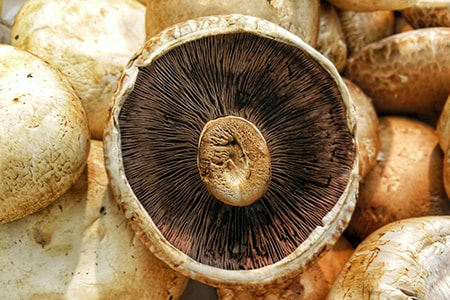
Mushrooms are ready for harvest when the caps separate from the stems, even before they drop their veils underneath the caps, which means they'll start dropping spores (that you can collect for the next round of growing).
You can gently twist and pull the caps off the stems. However, the safest method to ensure that you're not disturbing mushroom spores that are growing in the substrate is to cut the mature mushrooms from the stems.
If you want the stems as well, it's very simple to pull the entire mushroom (cap and stem both) from the substrate. It takes little force, but may disrupt the mycelium that has grown along the top that helps lock in moisture.
The exact timeline from planting to harvesting varies depending on the species that you have planted. It also depends on the nutrient value of the substrate that you choose to grow your mushrooms.
Oyster mushrooms give the quickest yield. They are ready to be harvested 20 days after inoculation.
White button mushrooms are also fast growers. They can be harvested three to four weeks after planting them. Once you have harvested your first yield, these varieties can be harvested daily for 6 months.
If you are using a growing kit, most of the work is already done and your mushrooms will be ready to harvest in 10 to 14 days after you open up the kit.
Freshly picked mushrooms have a shelf life of four to seven days if you store them in the fridge. You'll be able to increase their shelf life by cooking or freezing them. Some varieties like shiitake can also be dried and stored.
9) Problems During Mushroom Cultivation
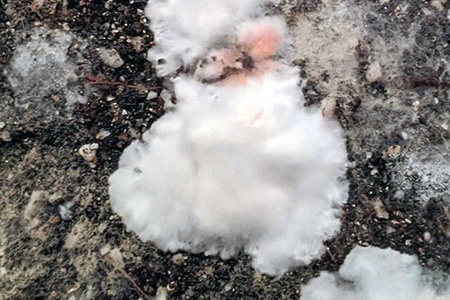
Usually, you want to protect your crops from fungi. But what do you protect your cultivated fungi from?
Mushrooms are very territorial species, so you don’t have to worry about other strains of fungi attacking and destroying your mushroom cultivation. They are very adept at keeping unwanted visitors away.
However, pesky mold can sneak its way into the substrate during the initial stages. This is because mold spores are abundantly found all around us and they will try to settle down when they find such an ideal environment for growth.
You just have to keep an eye on your garden and take care of the mold only if the growth seems to get out of hand. You can try cutting the mold area out, but if it gets out of hand you're better off getting rid of the entire batch. You do not want to ingest mold.
Another way to keep away mold is to sterilize the substrate before introducing the spawn into it. This involves pressure cooking to increase the temperature to where nothing survives.
That's How to Grow Mushrooms in Your Basement!
Mushrooms are highly nutritional vegetables. They are low in calories, fat, and cholesterol. They contain minerals like potassium, magnesium, and zinc. They are also rich in folates which are a source of vitamin B.
With all these benefits and more, you should definitely pour your heart into it and start growing mushrooms in your basement!
You'll Also Enjoy:
- 11 Underground Homes & Why Subterranean Houses Are Up Next
- Prepper Food Storage: A Starter's Guide on What & Why
- 9 Drop Ceiling Alternatives to Get Away From That Stale Office Look
- Garage Floor Crack Repair 101 (Plus When to DIY & When to Call a Pro)
- How To Store Honey for Better Quality, Saving Money, & Helping Bees



